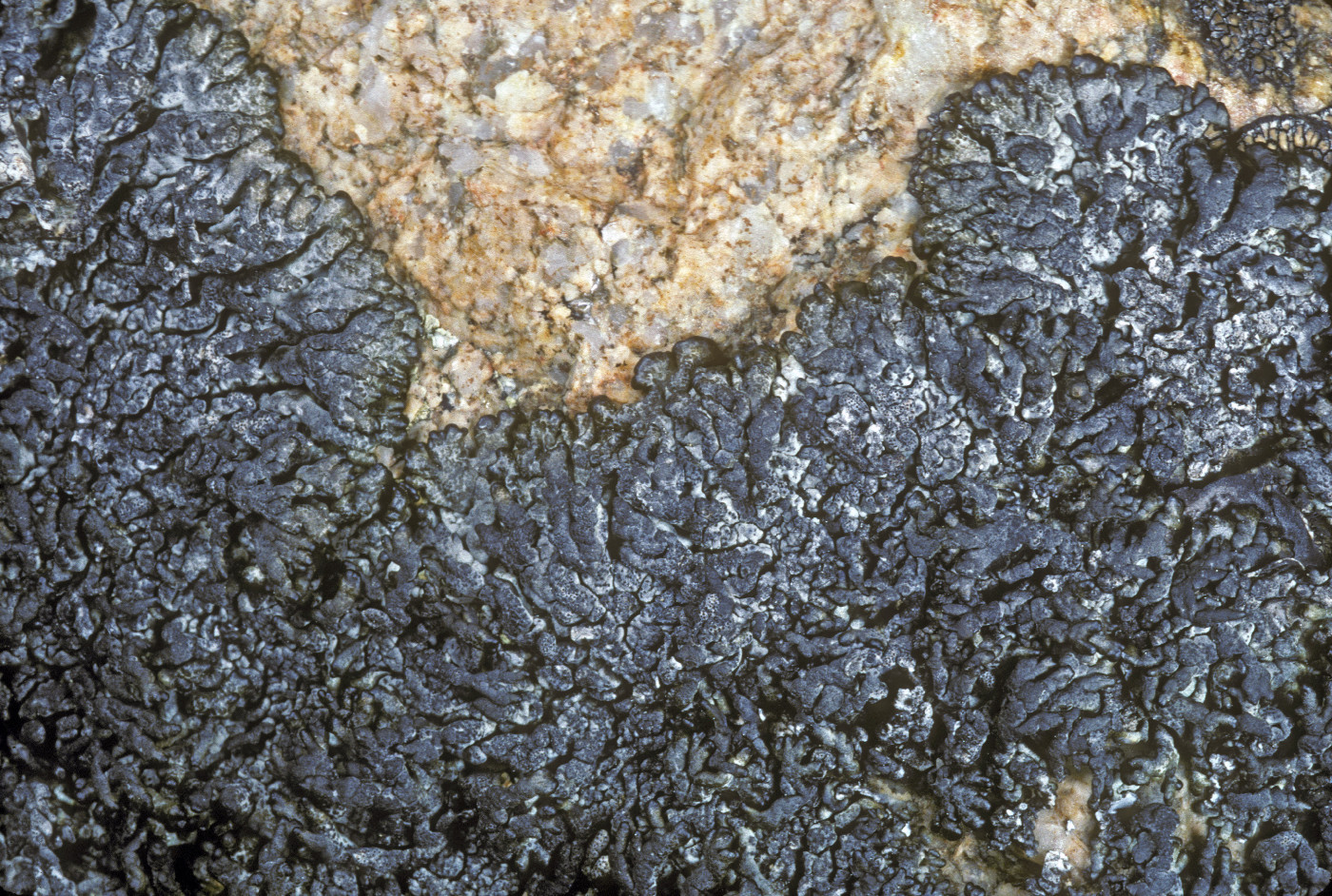
Consortium of Lichen Herbaria
- building a Global Consortium of Bryophytes and Lichens as keystones of cryptobiotic communities -
- Home
- Search
- Images
- Species Checklists
- US States: O-Z >
- US National Parks
- Central America
- South America
- US National Parks
- Southern Subpolar Region
|
Family: Parmeliaceae |
Nash, T.H., Ryan, B.D., Gries, C., Bungartz, F., (eds.) 2002. Lichen Flora of the Greater Sonoran Desert Region. Vol 1. Thallus: foliose to subfruticose, closely adnate to semi-erect, cushion-forming, up to c. 6 cm diam., lobate lobes: rather elongate, ± swollen, stiff, 0.5-1.5 mm wide, contiguous to separate or loosely overlapping; attached by basal holdfasts upper surface: pale gray to nearly black, generally somewhat shiny (at least towards lobe tips), convex; soredia, isidia, and thallus perforations lacking, but regeneration lobules occasionally present upper cortex: paraplectenchymatous and covered in a thin polysaccharide-like layer (nonpored epicortex) medulla: white throughout; cell walls containing Cetraria-type lichenan photobiont: primary one a trebouxioid alga, secondary photobiont absent lower cortex: palisade plectenchymatous, lacking polysaccharide-like covering lower surface: tan or black, dull, becoming wrinkled, without rhizines Ascomata: apothecial, laminal, circular, sessile with a prominent thalline margin; disc: concave, nonperforate, up to 5 mm diam.; exciple: gray or hyaline; epihymenium: brown or ochraceous-yellowish; hymenium: hyaline, usually with unbranched paraphyses; hypothecium: hyaline asci: clavate, Lecanora-type, 8-spored ascospores: ellipsoid, obtuse at the poles, colorless, simple, 8-12 x 6-8 µm, wall smooth, without distinct endospore thickening, I- Conidiomata: pycnidial, black, laminal-lateral, immersed in upper cortex conidia: normally bifusiform (6 x 1 µm) Secondary products: ß-orcinol depside, orcinol and ß-orcinol depsidones Geography: arctic and alpine in the Northern Hemisphere Substrate: on siliceous rocks, not calciferous. Notes: Brodoa differs from Hypogymnia in that the lower cortex is palisade plectenchymous without a polysaccharide-like layer, the medulla is always solid, the thallus lacks perforations, the spores are larger, and it grows only on rocks in arctic-alpine areas. Apparently it is related to Allantoparmelia, which differs in having a brown upper surface (lacking atranorin) and isolichenan in the cell walls. Superficially it might be confused also with loosely adnate species of Lobothallia, but that crustose to subfoliose genus occurs at low to moderate elevations, is usually K+ yellow then red, and has a very different ascocarp anatomy with larger spores. |
Powered by Symbiota









